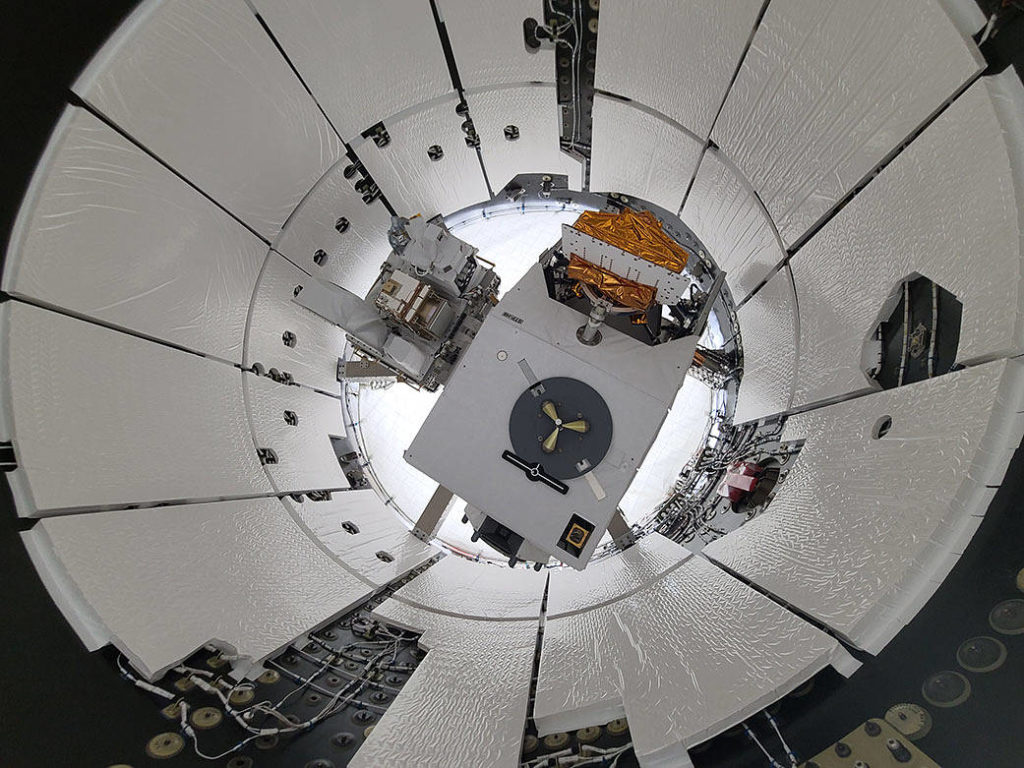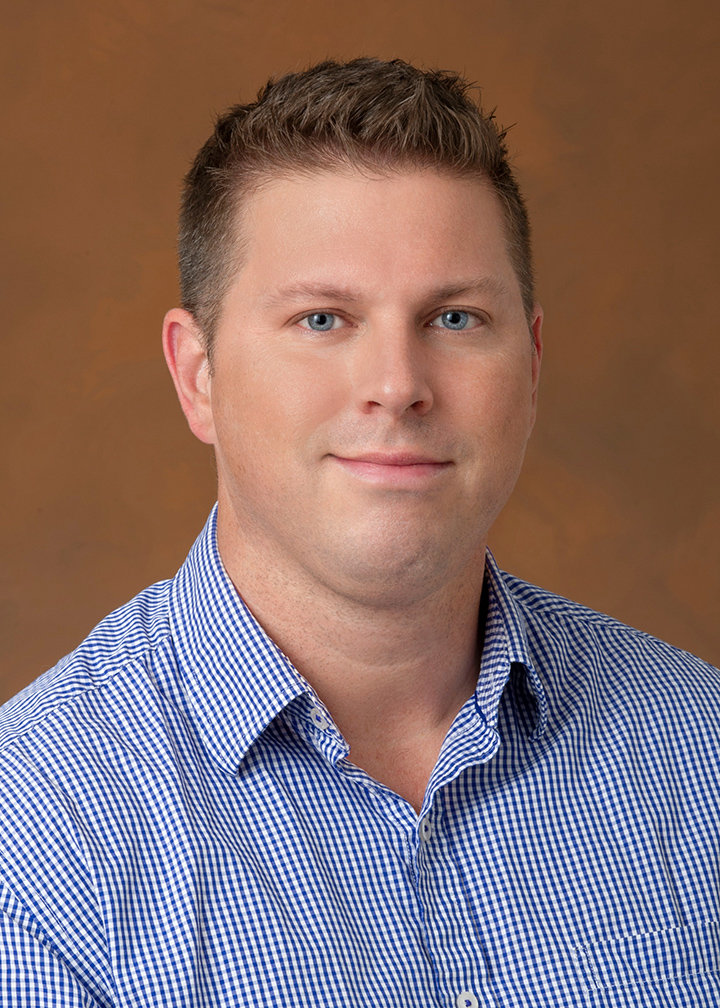
Brown Honored with Alumni of the Year Award
The U-M Department of Climate and Space congratulates Dr. Shannon T. Brown, who is the recipient of the 2022 Alumni of the Year Award.

The U-M Department of Climate and Space congratulates Dr. Shannon T. Brown, who is the recipient of the 2022 Alumni of the Year Award.
The U-M Department of Climate and Space Sciences and Engineering honored Dr. Shannon T. Brown with the Alumni of the Year Award for 2022. Brown works at the NASA Jet Propulsion Laboratory in Pasadena, Calif., as a principal technologist.
During the ceremony, Darren McKague, an associate research scientist at U-M, said he was impressed with the breadth of Brown’s work, which ranges from mission development and management to roles as principal scientist or P.I., and from engineering, calibration and design, to innovative uses of data.
“There’s a consistent record of innovation all across those boards,” said McKague. “He is very quickly becoming one of the key, go-to people in microwave radiometry and spaceborn radiometers.”
Brown’s interest in climate science began when he attended grade school in Pennsylvania. Not unlike other students, he wanted to predict when he would get a snow day. Later when he entered his college studies, he pursued meteorology and learned what a radar can do. That sparked his interest in instrument science.
Fast forward to the present day. Brown now supervises the microwave instrument science group at the Jet Propulsion Laboratory, where he has worked for nearly 18 years. He still devotes time to understanding the processes behind the weather, but he does this as part of NASA’s work observing both Earth and other planets.
“What we specialize in is building new instruments, developing new technologies, and working with scientists and also operational weather agencies to figure out what their needs are going to be in the future,” said Brown. “If the technology exists, we can go right to proposing it to a mission. If the technology doesn’t exist to do whatever [scientists] need to do, which is often the case for us, we will write proposals to NASA to develop the technology.”
His work ties back to his original interest in meteorology, only it takes the study much farther than most people imagine — to near-Earth orbit and outer space.
“You can turn any mission looking at Earth into a climate mission if it’s up there long enough.” Brown primarily works with microwave radiometers, which measure natural thermal emissions. “Most of the instruments that we work on measure various geophysical parameters for either a science purpose — it could be trying to understand a physical process, like ‘How do convective storms form in the tropical Pacific, and why do they form where they do?’ — or it could be supporting the operational weather agencies like NOAA or the DOD that run weather models.”

“Instrument science bridges the gap between engineering and science,” said Brown. “It’s one of the more interesting, but also more important jobs on the project.”
As an instrument scientist, he works with climate scientists to determine what the needs are, and he then works with engineers to determine what technology can answer those needs. With his team, he turns these advances in technology into a reality.
“You can piece those two things together,” said Brown. “Getting ahead of those problems is what keeps on budget and on schedule.”
Brown said he benefitted from the interdisciplinary education offered at the University of Michigan College of Engineering. He was able to take courses that were cross-listed in the electrical engineering department and the atmospheric and climate sciences department.
“It was valuable having that cross-disciplinary approach,” Brown said.
The electrical engineering professors would teach students how to build a new technology, and the atmospheric sciences professors would teach students why a technology was needed.
“Being in the center of that, you can be more successful that way,” said Brown. “Otherwise, you’re just waiting around for someone to build what you need, or you’re trying to build something and you don’t know who might ever want it.”
One of his proudest innovations was the creation of COWVR, the Compact Ocean Wind Vector Radiometer, a weather instrument that measures the direction and speed of winds on the ocean surface. The mechanically simple instrument launched to the International Space Station on a SpaceX Falcon 9 resupply mission one year ago, on December 21, 2021. Brown’s team was able to produce the technology more cheaply than ever before for the U.S. Air Force, in order to support the forecast models that predict storms over the ocean.
“Weather models are very hungry for data. If you’re spending $100 million for your sensor, you can only have maybe one or two of them. But in reality, what the forecasters actually would want would be 20 or 30 of them so that you can feed the model,” said Brown. His team engineered the instrument for a fraction of that, coming in at about $20 million. “The ability to fly five of these for the cost of one is what appeals to the U.S. Air Force.”
He said the most exciting change happening in the field is the broader convergence of digital technology, with instruments that are able to operate over very wide bandwidths. The digital technology would allow one space instrument to complete a job defined by its software, and then be reconfigured while it is in orbit to do a completely different job.
Taking classes with experts in the field gave Brown an advantage as he set out on his career, because he learned much of what he knows now directly from the source.

“For what I do, most of the leaders in the field were professors here,” said Brown. “My advisor Chris Ruf was always writing proposals, so I got indirect experience just by having conversations with him.”
In fact, Brown got his first exposure to the NASA missions at JPL through his work with Professor Ruf. In graduate school at U-M, he worked on an instrument that was very similar to an instrument NASA needed for the Juno Mission. He translated that experience to work on a proposal for Juno that was selected for the mission, and he was able to jump into the role as instrument scientist for NASA’s Juno Microwave Radiometer.
What advice does Brown have for future students? Never miss a thing. He said the tangential information he absorbed in U-M Climate and Space became important for him in his early days at the Jet Propulsion Laboratory.
“Pay attention,” said Brown. “What I mean by that is, oftentimes, if something is tangential to what your focus is, you might pick up your phone or otherwise not pay attention to whatever’s going on. While it might not seem relevant at the time, it often comes back. That little nugget of knowledge that you otherwise would’ve missed if you were on your phone becomes very important. It might not be that you completely understood whatever you were listening to at the time, but you got enough of it that you could go back and figure out how to research it.”
He also recommends building up a professional network, especially through the faculty, research scientists, staff and fellow students at U-M.
“Use them as a tool to meet people in the community and build up a network, because that’s the most critical part of this,” said Brown. “If you don’t know what’s going on in the community, which is done through networking, you’re never going to be that successful, because you’re just going to be doing your own little thing and not be able to respond to opportunities.”
Brown received a B.S degree in Meteorology from the Pennsylvania State University before he earned a M.S. in Atmospheric Science from the University of Michigan. He received his Ph.D. in Geoscience and Remote Sensing in 2005 from the University of Michigan, under the advisement of Professor Chris Ruf, Ph.D. His research interests include microwave radiometer instrument design, calibration and algorithm development for spaceborne and airborne instruments.
Brown has been involved with the spaceborne Topex and Jason Microwave Radiometers, WindSat Polarimetric Radiometer and the Jason follow-on Advanced Microwave Radiometers on Jason-2/3, Sentinel-6 and SWOT along with a number of airborne radiometers. He serves as the instrument scientist for the NASA Juno Microwave Radiometer and principal investigator for the U.S. Space Force Compact Ocean Wind Vector Radiometer instrument that is deployed on the International Space Station.
The department honored Brown in a reception following his presentation in the CLASP Seminar Series, which was held on campus on November 17, 2022. To view the seminar, vise the webpage: https://clasp.engin.umich.edu/about-us/seminars/